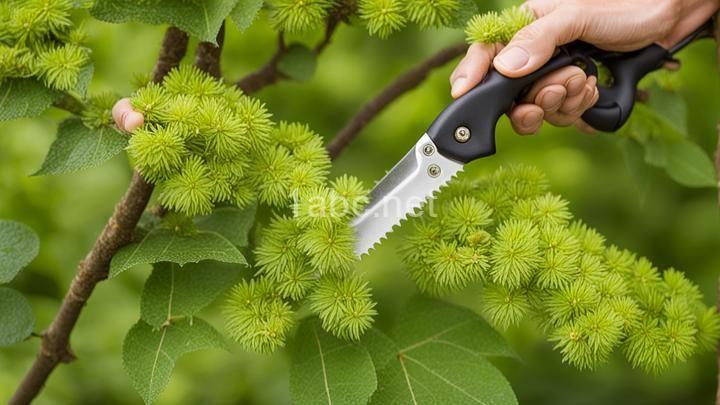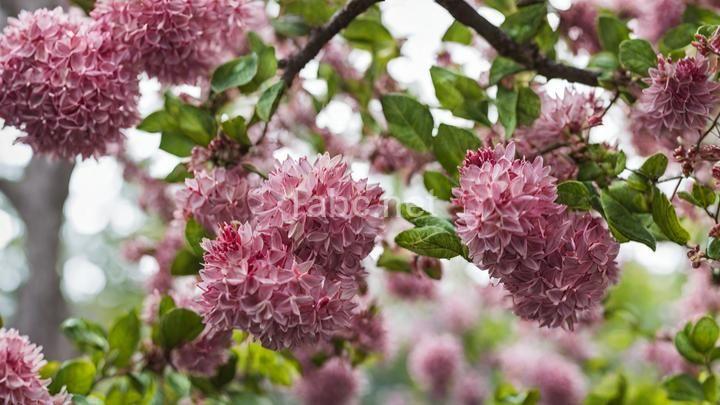Pruning Tips for Healthy and Robust Trees and Shrubs

Introduction:
Pruning is an essential practice for maintaining the overall health and vitality of trees and shrubs. It involves the selective removal of certain branches or parts of the plant to promote growth, improve aesthetics, and reduce the risk of disease or damage. Proper pruning techniques not only enhance the appearance of your green companions but also contribute to their long-term well-being.
In this comprehensive guide, we will walk you through the ins and outs of pruning, from understanding the basics to mastering the techniques. Whether you have a sprawling garden or a small backyard, these tips will help you maintain healthy and robust trees and shrubs.
Section 1: Understanding Pruning
Pruning is the act of removing specific branches or parts of a tree or shrub to enhance its health, shape, or growth. It is necessary for several reasons, including:
-
Promoting growth: By removing dead or diseased branches, you allow the plant to allocate its resources more efficiently and stimulate new growth.
-
Enhancing aesthetics: Pruning can help shape the tree or shrub, creating a more pleasing and balanced appearance.
-
Reducing risk: Removing weak or damaged branches can prevent them from falling and causing injury or property damage.
There are different types of pruning cuts that serve specific purposes:
-
Heading cuts: These cuts remove a portion of a branch, stimulating growth in the remaining part. They are commonly used to control the height or shape of a tree or shrub.
-
Thinning cuts: Thinning cuts involve removing an entire branch or a portion of it back to its point of origin. This technique allows for better air circulation and light penetration within the plant, reducing the risk of disease.
The timing of pruning depends on the type of tree or shrub:
-
Deciduous trees: Pruning is best done during late winter or early spring, before new growth begins. This allows the plant to heal before the growing season.
-
Evergreen trees and shrubs: Pruning can be done in early spring or late summer when the plant is not actively growing.
Section 2: Tools for Pruning
To effectively prune your trees and shrubs, you will need a few essential tools:
-
Hand pruners: Also known as secateurs, these are used for cutting small branches and stems up to ¾ inch in diameter. They are ideal for precise cuts and reaching tight spaces.
-
Loppers: Loppers have longer handles and larger blades, allowing you to cut branches up to 2 inches in diameter. They provide more leverage and are suitable for thicker or higher branches.
-
Pruning saws: Pruning saws have sharp, serrated blades designed for cutting larger branches. They are useful for heavy-duty pruning tasks.
When using pruning tools, safety should be a top priority. Here are some safety tips to keep in mind:
-
Wear protective gear such as gloves, safety glasses, and sturdy shoes to protect yourself from cuts and debris.
-
Make sure your tools are sharp and in good condition to make clean cuts and minimize strain.
-
Use caution when pruning near power lines or in precarious positions. It's best to leave such tasks to professionals.
Section 3: Pruning Techniques
Identifying branches that need pruning is crucial for effective pruning:
-
Dead branches: They are dry, brittle, and lack any signs of life. Removing them not only improves the plant's appearance but also prevents diseases from spreading.
-
Diseased branches: Look for branches with discoloration, cankers, or signs of infection. Pruning these branches helps contain the disease and promotes overall plant health.
-
Crossing or rubbing branches: These branches can cause wounds and create entry points for pests or diseases. Removing them allows for better airflow and reduces the risk of damage.
To make clean cuts without damaging the tree or shrub, follow these techniques:
-
Identify the branch collar: It is a slightly swollen area where the branch meets the trunk or main stem. Make cuts just outside the branch collar to avoid injuring the plant.
-
Angle the cut: For branches larger than 1 inch in diameter, use a three-cut method. Begin with an undercut, followed by a top cut, and finish with a final cut just outside the branch collar.
Step-by-step instructions for pruning different types of trees and shrubs:
-
Deciduous trees: Start by removing dead or diseased branches. Then, thin out any crossing or rubbing branches. Finally, shape the tree by selectively cutting back branches to promote a balanced appearance.
-
Evergreen trees and shrubs: Begin by removing dead or diseased branches. Next, thin out any dense or overcrowded areas to improve airflow. Finally, shape the plant by selectively pruning branches to achieve the desired form.
Section 4: Caring for Pruned Trees and Shrubs
After pruning, it's essential to provide proper care to ensure the health and vitality of your trees and shrubs:
-
Applying pruning sealant or wound dressing: While it was once believed to be beneficial, research now suggests that pruning sealants may hinder the tree's natural healing process. Instead, focus on proper pruning techniques to minimize damage.
-
Regular maintenance: Regularly inspect your trees and shrubs for any signs of disease or pests. Water them adequately, especially during dry periods, and provide appropriate fertilization to support healthy growth.
-
Mulching: Apply a layer of organic mulch around the base of your trees and shrubs. Mulch helps retain moisture, regulates soil temperature, and suppresses weeds.
Conclusion:
Pruning is a valuable skill that every gardener should possess. By understanding the basics of pruning, using the right tools, and applying proper techniques, you can maintain healthy and robust trees and shrubs in your garden. Remember to prioritize safety and seek professional help for more complex pruning tasks. With these friendly guidelines, you'll be well-equipped to keep your green companions thriving for years to come. Happy pruning!
FREQUENTLY ASKED QUESTIONS
Why is pruning important for the health of trees and shrubs?
Pruning is essential for maintaining the health of trees and shrubs. By removing dead, diseased, or damaged branches, pruning promotes the overall well-being of the plant. This practice helps to prevent the spread of diseases and pests, allowing the tree or shrub to thrive.Pruning also enhances the aesthetic appeal of trees and shrubs. By shaping and thinning the branches, pruning improves the overall appearance of the plant, making it more visually pleasing. This can be especially important for trees and shrubs that are used for landscaping purposes.
Another benefit of pruning is that it encourages new growth. By selectively removing branches, the plant is stimulated to produce new shoots, which can lead to increased foliage and flowering. This can result in a fuller, healthier plant.
Furthermore, pruning helps to improve air circulation and sunlight penetration within the canopy of the tree or shrub. By removing overcrowded branches, pruning allows for better airflow and sunlight to reach the interior parts of the plant. This helps to reduce the risk of fungal diseases and promotes the development of healthy foliage.
It is important to note that proper pruning techniques should be followed to avoid causing harm to the tree or shrub. Pruning cuts should be made at the correct angle and location to promote proper healing and prevent the introduction of pathogens.
In conclusion, pruning plays a crucial role in maintaining the health and vitality of trees and shrubs. It not only improves the appearance of the plant but also helps to prevent diseases, encourages new growth, and enhances air circulation and sunlight penetration.
When is the best time to prune trees and shrubs?
The best time to prune trees and shrubs depends on the specific type of plant and its growth habits. In general, it is recommended to prune deciduous trees and shrubs during their dormant season, which is typically in late winter or early spring before new growth begins. This allows the plant to recover and heal before the active growing season.For flowering shrubs, it is best to prune them right after they finish blooming. This ensures that you don't remove any flower buds and allows the plant to set new buds for the next season. However, if the shrub blooms on new growth, it can be pruned in late winter or early spring.
Evergreen trees and shrubs can be pruned in late winter or early spring as well, but you can also prune them in early to mid-summer if necessary. Avoid pruning evergreens in late summer or fall, as this may stimulate new growth that can be damaged by winter frost.
It's important to note that some trees and shrubs have specific pruning requirements, so it's always a good idea to research the specific plant or consult with a professional if you're unsure. Additionally, proper pruning techniques should be followed to ensure the health and aesthetics of the plant.
How much should I prune off my trees and shrubs?
When it comes to pruning trees and shrubs, the amount you should prune depends on several factors. First and foremost, you need to consider the type of plant you are dealing with. Different species have different growth habits and pruning requirements.For most trees and shrubs, a general rule of thumb is to remove no more than one-third of the plant's total foliage in a single pruning session. This ensures that the plant can still produce enough energy through photosynthesis to sustain itself.
It's also important to keep in mind the time of year when pruning. For deciduous trees and shrubs, it's typically best to prune during the dormant season, which is late winter or early spring. This allows the plant to recover and start regrowing when the growing season begins.
When pruning, focus on removing dead, damaged, or diseased branches first. These can potentially harm the overall health of the plant if left unattended. Next, consider removing any crossing or rubbing branches that may cause damage or inhibit healthy growth.
As you prune, step back occasionally to assess the overall shape and structure of the plant. Aim for a balanced and open canopy that allows light and air to reach all parts of the plant. Avoid excessive pruning that may leave the plant weak or vulnerable to pests and diseases.
It's always a good idea to consult with a professional arborist or horticulturist if you're unsure about how much to prune or if you have specific concerns about a particular plant. They can provide expert guidance tailored to your specific situation.
What tools do I need for pruning?
When it comes to pruning, there are a few essential tools that you'll need to have on hand. These tools will help you maintain the health and appearance of your plants. Here are the tools you'll need for pruning:
-
Pruning Shears: Also known as hand pruners or secateurs, these are a must-have for any gardener. Pruning shears are designed to cut through small branches and stems with ease. Look for a pair with a bypass blade, as they provide a cleaner cut.
-
Loppers: Loppers are a larger version of pruning shears and are used to cut through thicker branches. They have long handles and a bypass or anvil blade for extra leverage. Loppers are perfect for pruning trees and shrubs.
-
Pruning Saw: For larger branches that are too thick for loppers, you'll need a pruning saw. These saws have a curved blade and are designed to cut through wood quickly and efficiently. Look for one with a comfortable grip and a sharp, durable blade.
-
Hedge Shears: If you have hedges or shrubs that need trimming, hedge shears are essential. These shears have long, straight blades and sturdy handles for precise cutting. Look for a pair with adjustable tension for added control.
-
Gloves: It's important to protect your hands while pruning, especially if you're dealing with thorny plants. Invest in a good pair of gardening gloves that fit well and offer both comfort and protection.
-
Pruning Seal: While not a tool per se, pruning seal is a handy product to have. It's a protective sealant that can be applied to the cut ends of branches to prevent disease and pests from entering. Look for a pruning seal that is non-toxic and easy to apply.
Remember, proper maintenance and care of your pruning tools is crucial. Keep them clean and sharp to ensure effective pruning and longevity. Happy pruning!

